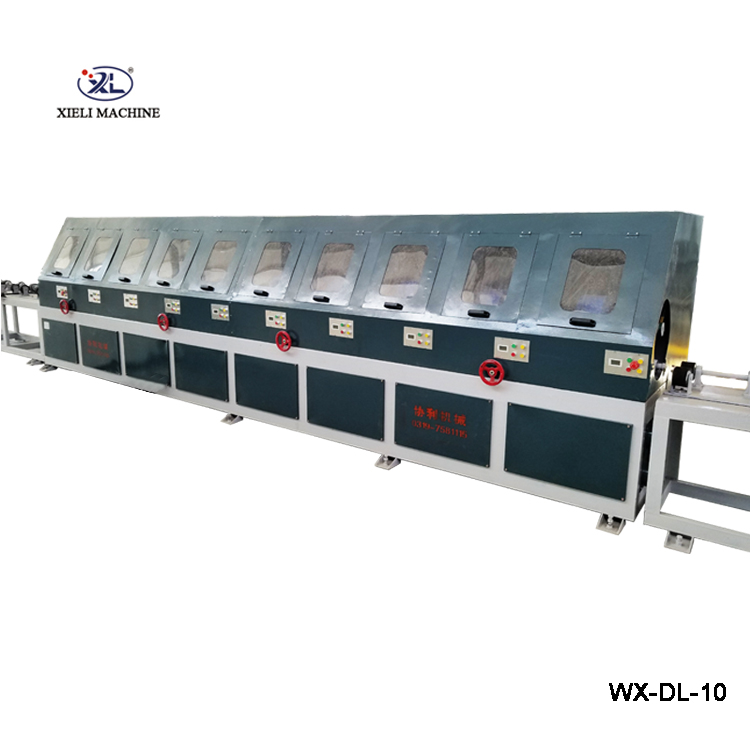Exploring DIY Centerless Grinder Products A Comprehensive Guide
Centerless grinding is an essential machining process used to shape and finish metal components with precision and efficiency. Unlike traditional grinding methods that require the workpiece to be held between two centers, centerless grinding allows for continuous workpiece movement, resulting in improved productivity and reduced machining time. In recent years, the popularity of DIY centerless grinder projects has surged, with hobbyists and professionals alike seeking to create their own custom grinders for specific tasks. This article explores the potential of DIY centerless grinder products, their benefits, and essential considerations for successful construction.
Understanding Centerless Grinding
Before diving into the DIY aspect, it’s important to understand the mechanics behind centerless grinding. The process involves placing the workpiece between two rotating wheels the grinding wheel and the regulating wheel. The grinding wheel removes material from the workpiece, while the regulating wheel controls the speed and positioning of the workpiece. This unique setup allows for high precision and the ability to grind multiple workpieces continuously without the need for setup or repositioning.
Benefits of DIY Centerless Grinders
1. Customization One of the primary benefits of creating a DIY centerless grinder is the ability to customize it to meet specific requirements. Whether you need to grind particular shapes, sizes, or materials, a DIY approach allows you to tailor your grinder accordingly.
2. Cost-Effective Solutions Commercial centerless grinders can be quite expensive, making them less accessible for hobbyists or small-scale operations. A DIY grinder can be built for a fraction of the cost, using recycled materials or inexpensive components.
3. Learning Experience Building a centerless grinder from scratch or modifying an existing one can be a great educational experience. It allows users to deepen their understanding of machining processes, machinery components, and operational techniques.
4. Space Efficiency For those working in limited spaces, DIY centerless grinders can be designed compactly to fit into small workshops. This can provide a practical solution for individuals who need efficient equipment without excessive footprints.
Key Components for DIY Centerless Grinders
To embark on a DIY centerless grinder project, several key components must be gathered or constructed
1. Frame A sturdy frame is crucial for stability and alignment. Many builders opt for heavy-duty steel or aluminum to ensure the frame can withstand the forces generated during grinding.
diy centerless grinder products

2. Grinding and Regulating Wheels The choice of wheels will significantly affect grinding performance. High-quality, appropriately sized grinding wheels can be sourced online or fabricated from materials suited for the intended grinding operations.
3. Motor An electric motor provides the necessary power to rotate the grinding wheel. Selecting a motor with the right RPM (revolutions per minute) and horsepower is vital for achieving the desired results.
4. Guide and Support Mechanisms Proper alignment is critical in centerless grinding. Incorporating precise guide systems will help maintain consistent workpiece feeding and improve overall grinding efficiency.
5. Cooling System Grinding processes generate significant heat. Including a cooling system, whether through a pump and coolant reservoir or a basic water spray, can help prolong tool life and maintain desirable machining conditions.
Construction Tips
When building a DIY centerless grinder, several tips can enhance the effectiveness of the final product
- Research and Planning Before starting construction, conduct thorough research on existing designs and gather inspiration. This will help you understand best practices and potential pitfalls.
- Accurate Measurements Precision is key in machining. Taking the time to measure accurately and ensure components fit together correctly will contribute to an efficient grinding process.
- Testing and Iteration After constructing the grinder, conduct testing with different materials and adjustments. This iterative process can help fine-tune the performance of your machine.
Conclusion
DIY centerless grinders present an exciting opportunity for both hobbyists and professionals to delve into the world of precision machining. By understanding the mechanics of centerless grinding, sourcing the right components, and adhering to effective construction practices, anyone can create a functional and efficient grinding machine tailored to their specific needs. Whether it’s for personal use or small-scale production, a DIY approach fosters innovation and creates unique solutions in the world of metalworking.









